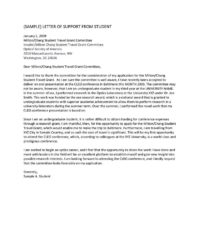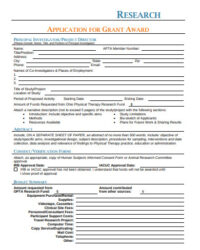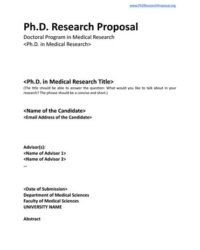Utilizing such a framework offers several advantages. It saves applicants time and effort by providing a clear roadmap for presenting their qualifications and travel plans. A well-organized application enhances the clarity and impact of the proposal, increasing the likelihood of a successful outcome. Furthermore, these frameworks often incorporate specific guidelines and criteria from the sponsoring entity, improving the chances of meeting their requirements and maximizing competitiveness.
This resource explores various facets of applying for travel funding, including identifying suitable opportunities, crafting compelling narratives, and understanding evaluation processes. Subsequent sections will delve into specific components of a typical application, offering guidance and practical tips for creating a strong and persuasive submission.
Key Components of a Travel Award Application
Successful applications for travel funding typically incorporate several key elements. These components provide a comprehensive overview of the proposed travel, its purpose, and the applicant’s qualifications. A well-structured application demonstrates a clear understanding of the opportunity and the potential impact of the funded travel.
1. Applicant Information: This section requires basic biographical details, contact information, and current affiliation. Accurate and up-to-date information is crucial for communication and verification purposes.
2. Travel Purpose and Destination: A concise and compelling explanation of the travel purpose is essential. This should clearly outline the relevance of the destination and its significance to the applicant’s field of study or professional development.
3. Project Description/Abstract: Applicants should articulate the project’s objectives, methodology, and expected outcomes. This section demonstrates the intellectual merit and potential impact of the proposed activity.
4. Budget Justification: A detailed budget outlining all anticipated expenses, including travel, accommodation, registration fees, and other related costs, is necessary. Clear justification for each expense is vital for demonstrating responsible financial planning.
5. Timeline and Itinerary: A proposed timeline and itinerary provide a structured overview of the travel plan. This clarifies the duration and sequencing of activities, ensuring feasibility and efficient use of time.
6. Supporting Documents: Relevant supporting materials, such as letters of recommendation, invitations, or abstracts of presentations, may be required. These documents strengthen the application by providing external validation and evidence of merit.
7. Applicant Qualifications: This section allows applicants to highlight their relevant skills, experience, and achievements. Demonstrating alignment between qualifications and the proposed travel reinforces the application’s strength.
A thorough and well-prepared application package significantly increases the chances of securing travel funding. Careful attention to each of these components ensures a clear, concise, and compelling presentation of the proposed travel and its potential benefits.
How to Create a Travel Award Application Template
Creating a standardized template streamlines the application process for travel funding opportunities. A well-designed template ensures consistency, completeness, and clarity in submitted applications, facilitating efficient review and evaluation. This section outlines key steps in developing an effective template.
1: Define the Purpose and Scope: Specify the types of travel awards the template will support (e.g., conference attendance, research travel, field work). A clearly defined scope ensures relevance and practicality.
2: Determine Required Information: Identify essential information needed from applicants, including biographical data, travel details, project descriptions, and budget justifications. Consider the specific requirements of potential funding sources.
3: Structure the Template: Organize the template into logical sections with clear headings and subheadings. A structured format enhances readability and accessibility for both applicants and reviewers.
4: Develop Clear Instructions: Provide concise and unambiguous instructions for each section. Clear guidance minimizes ambiguity and ensures complete and accurate responses.
5: Incorporate Formatting Guidelines: Specify formatting requirements for font, spacing, margins, and page limits. Consistent formatting promotes professionalism and ease of review.
6: Include Examples and Prompts: Offer examples of well-written responses and provide prompts to guide applicants in crafting compelling narratives. Illustrative materials enhance clarity and encourage thoroughness.
7: Review and Refine: Subject the template to thorough review and refinement to ensure clarity, completeness, and usability. Pilot testing with potential applicants can identify areas for improvement.
8: Disseminate and Maintain: Distribute the template to potential applicants through accessible channels. Regularly review and update the template to reflect evolving requirements and best practices.
A robust and user-friendly template ensures that applications are well-organized, comprehensive, and aligned with funder expectations. This structured approach facilitates a more efficient and effective application process, ultimately increasing the likelihood of securing travel awards.
Standardized frameworks for travel funding requests offer a crucial tool for both applicants and awarding bodies. These templates provide structure and clarity, ensuring comprehensive submissions that address key evaluation criteria. From applicant information and project descriptions to budget justifications and supporting documentation, a well-designed template streamlines the process, enhancing efficiency and promoting equitable evaluation. This structure benefits applicants by clarifying expectations and facilitating a more focused presentation of qualifications and travel plans, ultimately increasing the likelihood of successful outcomes.
Effective utilization of these frameworks promotes accessibility and transparency within competitive funding landscapes. By providing a level playing field and ensuring consistent evaluation standards, these resources empower individuals to pursue valuable travel opportunities. Ultimately, the strategic development and implementation of these templates contribute to a more robust and equitable system for supporting academic, professional, and research-related travel.


